Nepal, Wild Nepal | Walking & Trekking

- Grade:
-
?
Strenuous
Suitable for fit individuals who have regular experience of mountain walking.
Find out more...
Strenuous
-
?
- Duration: 24 days from the UK
- On trek: 18 days
- Private Departures Available
Flight inclusive from £5100, Land only from £3750
A trek for true adventurers through wild and ruggedly beautiful high-mountain scenery, far removed from the outside world.
Highlights
- Genuinely remote and culturally distinct - an area of Nepal where few westerners ever reach
- Phuksundo Lake is just one of the spectacular scenic highlights of this trip
- Visit Shey Gompa and make a 'kora' of the fabled Crystal Mountain
- Spend time with the people of Dolpo
- Excellent acclimatisation with two rest days
- Enjoy first rate camping facilities on trek and a four star hotel in Kathmandu
Isolated by towering, snow-clad peaks and home to the rarest of all mountain creatures - the snow leopard - the wildly remote region of Dolpo retains an air of mystery alongside its stupendous Himalayan scenery.
Most of the Dolpo district is now covered by Shey Phoksundo National Park, the largest trans-Himalayan national park. This was created in 1984 to protect the endangered wildlife living here, including snow leopard, blue sheep, musk deer, Tibetan wolf, and many more. In addition to its spectacular landscapes and wildlife Dolpo is considered a last enclave of true Tibetan culture, locals still wearing traditional Tibetan-style clothes and jewellery and practicing their ancient Bon Po religions, shamanistic religions that predate Buddhism in Tibet.
Your adventure begins with a flight to the airstrip at Juphal from where you trek north following the route made famous by Peter Matthiessen in his powerfully evocative book ‘The Snow Leopard’. Entering Phoksundo National Park you too will be moved by the breathtaking beauty of the luminous jade-blue waters of its central lake surrounded by jutting, jagged peaks.
From Phoksundu you trek to the Crystal Mountain, the sacred heart of Dolpo and the holiest mountain in Upper Dolpo and second only to Mount Kailash in spiritual importance. You will complete an exciting kora (circumambulatiom) of this fabled mountain, taking a route followed on one of the most important Himalayan pilgrimages of Nepal – a sacred kora traditionally completed by the people of Dolpo during the months of July/August before the barley harvest. You will also explore the remote eleventh century monastery of Shey Gompa - the most important monastery in Dolpo.
After your completion of the kora of the mountain you cross the mighty Kang La, 5,279m/17,320ft, to experience some of the finest views in Nepal before trekking back across the Numa La, passing through the beautiful valley of the Tarap Chu and visiting Tokyu Gompa and other gompas along the banks of the river. You will also visit Tarakot with its ancient dzong, formerly capital of the region and continue to Dunai and to the end of your trek in Juphal.
The sheer isolation of the region means that this Upper Dolpo trek is ideal for the experienced walker who would like a wild, yet culturally distinct, Himalayan experience.
Private Departures
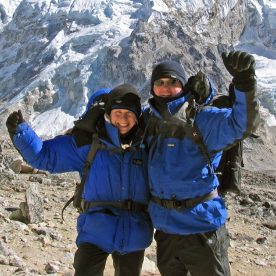
Snow Leopard Trek, Upper Dolpo - Private Departures
If you would prefer to travel just with your partner, friends or family, we can arrange a private departure of this holiday. You follow the same itinerary, but travel on dates that suit you. Alternatively we can include elements of this holiday in a bespoke Tailor Made itinerary. Contact our friendly team for details and prices, and to make a booking.
At a glance
Strenuous
Duration: 24 days from the UK
On trek: 18 days
Max. Altitude: 5,300m/17,388ft, Kang La, Day 13
Private Departures Available
Guaranteed to run for a minimum of 5 clients
Maximum group size: 12
Accommodation types: Hotels, Camping
Meal arrangements: 22 x breakfasts, 20 x lunches, 19 x dinners. Bed and breakfast in Kathmandu, all meals on trek and in Nepalganj.
Itinerary overview
| Day | Activity |
|---|---|
| 1-3 | Fly to Kathmandu and onto Nepalganj. |
| 4-8 | Fly to Juphal and trek to Phoksundo Lake. Rest day by the lake. |
| 9-12 | Trek to upper Phoksundo Khola, Phulbari and behind Crystal Mountain to Shey Gompa. Rest day. |
| 13 | Complete the kora of Crystal Mountain and cross Kang La. |
| 14 | Trek to Sallaghari at Phoksondu Khola. |
| 15-16 | Trek to Numa La BC, cross Numa La and trek to Tokyu. |
| 17 | Trek to Langa |
| 18-20 | Trek to Chhyugar, Kanigaon and Dunai |
| 21-22 | End trek at Juphal. Fly to Kathmandu via Nepalganj. |
| 23-24 | Day at leisure in Kathmandu. Fly to London. |
Leader: Sherpa Leader, Nepal
This trek will be led by a professionally trained, English speaking Sherpa. They have an intimate and expert knowledge of the history, culture and nature of Nepal and will make your trip a memorable experience.
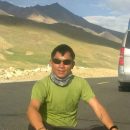
Holiday Itinerary
Day 1 - Fly London To Kathmandu
Depart London on your overnight flight to Kathmandu.

Day 2 - Arrive in Kathmandu, 1,300m/4,265ft. Transfer to hotel.
On arrival in Kathmandu you will be met and transferred to your hotel. The rest of the day is free for you to relax at your hotel or explore the local area. You’re staying in the Thamel district of Kathmandu, the tourist heart of the city, so there are numerous shops, cafes, bars and restaurants right on the doorstep to enjoy. Your hotel is also the home of the Museum of Nepali Art (MONA) and you may like to browse their interesting collection of artworks during your stay.

Day 3 - Fly to Nepalganj, 150m/500ft.
This morning, you may have time for some sightseeing or shopping in Thamel. In the afternoon you will take a 1 hour flight to Nepalganj. The flight will give good views of the Himalaya to the north. Transfer to your hotel. The town is situated 3km from the southern Nepalese border with India. Here it is quite hot and tropical.

Day 4 - Fly to Juphal, 2,475m/8,120ft. Trek to Rupagad, 2,120m/6,955ft - 3 hours.
A wonderful early morning, 35-minute flight, over the Himalayan foothills, with the major peaks including Annapurna and Dhaulagiri to the north east. After an exciting landing at the mountain airstrip at Juphal you meet your trek crew and Sherpa sirdar. It takes about an hour to descend through the village below the airstrip. Your path takes you through terraced fields to the Bheri River and you then walk for about an hour through the narrow gorge leading to Dunai until just before the big bridge over the river to Sulighat. Overnight camp in the garden of a lodge at Rupagad.

Day 5 - Trek to Chhepka, 2,670m/8,759ft - 6 hours.
At the confluence of the Thuri Bheri and Suli Gad rivers you turn to the north and follow the Suli Gad. The trail is fairly undulating, but mostly up and the going is firm underfoot. You are never far from the river and can always hear its roar. You pass through an area which is overgrown with marijuana plants and there are also crops for the villagers and their animals including millet, pumpkin, potatoes, sweet corn and chillies. Many of the villages in this area are involved in the production of a lotus-like plant called 'chuk' that is used to make vinegar and medicines. It is dried and flown from Dolpo to Nepalganj and exported to India. You continue to track the river and eventually reach the settlement of Hanke, which is also the entrance to the Phoksundo National Park. The three villages you pass through have a strange name connection; Parela, meaning 'eyelash', Rahagaon meaning 'eyebrow' and Ankhe meaning 'eye'. You continue northwards, following the river to Chhepka.

Day 6 - Trek to Somdua, 3,000m/9,845ft - 6-7 hours.
A good deal of improvement has been done on this trail with new river crossings. The trail keeps closer to the river, crossing it several times; even so, there are still some steep undulations and at times the path hugs the cliff face. Frequent stops to admire the scenery, or to take a breather become a necessity. You continue to track the river until you reach your night's stop at Somdua.

Day 7 - Trek to Phoksundo Lake, 3,600m/11,811ft - 6-7 hours.
From Sumdo the trail goes very steeply uphill. Here you leave the river and follow the path high above the water. You ascend to a ridge, about 3875m/12,713ft, from where you will have the most staggering views of a 300m/1,000ft waterfall, the highest in Nepal and your first view of Phoksundo Lake, a study in turquoise. You then descend through birch forests to the upper reaches of the Phoksundo Khola and on to the picturesque settlement of Ringmo with its mud-plastered chortens and mani walls. The village now has solar panels helping to improve the quality of life of the villagers. From the settlement it is a short walk to the shores of Phoksundo Lake where you set up camp.

Day 8 - Rest day.
The nearby Bon Monastery is well worth a visit, as is the village of Ringmo. A walk part way round the lake is also very relaxing. There will be time to catch up with domestic chores as well, if need be.

Day 9 - Trek to Upper Phoksundo Khola, 3,680m/12,074 - 6-7 hours.
From the lakeside you follow the trail that skirts the edge of the lake itself. This airy trail, featured in the movie 'Himalaya', is in places suspended on a gangway of wood supported on pegs driven into crevices in the rocks and signals the remoteness of the area you are about to enter. You go very steeply up, to approximately 4,100m/13,450ft and then plunge down again to the valley bottom to enter the flood plain of the Phoksundo Khola and trek to your night stop alongside the river, but within the confines of the forest to avoid the worst of the wind which is prevalent in the valley bottom.

Day 10 - Trek to Phulbari - 6-7 hours, to start of the ‘kora’ of Crystal Mountain.
Today you trek for two hours beside the Phuksonso Khola. You then cross the river and head north with the river on your left. You come to two rivers and cross a small river which originates from the Kang La Pass. You will have lunch on the other side.
After lunch you start following the route taken each year by the people of Dolpo - on the day of the full moon in July/August - to begin their traditional kora of Crystal Mountain. You climb steadily on a zigzag trail for 3-4 hours to reach your campsite at Phulbari.

Day 11 - Trek round the Crystal Mountain to Shey Gompa - 6-7 hours.
Crystal Mountain is situated to the west of Shey monastery. It is considered the holiest mountain in the Dolpo region and is very important in the Tibetan culture of Dolpo. It is a very strange mountain indeed. Its contorted cliffs are laced with quartz and embedded with a rich variety of marine fossils. Your trek todays starts with a gradual climb, keeping the crystal mountain on your right hand side and heading to the west side of the mountain. After the climb you will descend and get a first sight of the hill above Shey Gompa. From this point you can see a trail coming from Bijer to Shey Gompa in the far distance. You then continue walking on a gradual trail all the way to Shey Gompa.

Day 12 - Rest day at Shey Gompa.
As Shey means crystal, this monastery is also known as the Crystal Monastery. The lama of the monastery resides at a red hermitage known as Tsakang Gompa which is west of Shey. It is not really a monastery, but a retreat and has been a meditation centre of many famous lamas from Tibet. Shey Gompa belongs to the Chaiba community, followers of the Padma Sambhava and Kagyu sects. It was the first Kagyupa monastery and its founder was the lama Ten-szin-Ra-Pa. The monastery was founded during the 11th century. Shey is famous for its ancient Buddhist culture. In Dolpo the ancient Tibetan way of life combines animism with the teachings of Buddha. The Buddhist master Drutup Yeshe, famous for his meditations at Mount Kailash, travelled to Dolpo in the 12th century and is revered as introducing Buddhism in the Dolpo valley. When he arrived in Dolpo he is said to have come across a wild people whose supreme God was a 'fierce mountain spirit'.
You have the day to relax at the camp or do a little exploration of the area.

Day 13 - Complete the kora of Crystal Mountain and cross the Kang La Pass, 5,300m/17,388ft.
Well rested after a day at Shey Gompa, you will complete your kora of the Crystal Mountain today and cross the Kang La Pass. From Shey you set off uphill, keeping the Crystal Mountain on your right and enjoying great views of Kanjiroba and Kagmara mountains. It’s then a steep ascent to the Kang La Pass, the final stretch to the col being particular steep and shaley making it very hard work indeed. The views from the Kang La of wild valleys and mountains are magnificent and well worth all the effort.
You descend in one and a half hours to camp.

Day 14 - Trek to Sallagarhari at Phoksundo Khola.
From the camp below the pass you trek downhill, crossing small rivers that originate from the Kang La in five or six places. Finally you cross a metal bridge over a big river that originates from Kanjiroba Himal and then you continue gradually downhill to reach your campsite at north Phoksundo Lake.

Day 15 - Trek to Numa La Base Camp - 5-6 hours.
Your trek continues today by crossing the river from flowing from the Kanjiroba Himal and keeping the lake on your right. You then walk on the left bank and ascend on a gradual trail. You will then cross the river from the Numa La to reach the tree line. You leave the river on the north side and begin the climb towards the Numa La Base Camp.

Day 16 - Cross Numa La Pass, 5,190m/17,027ft, and trek to Tokyu 4,350m/14,271ft.
You begin by trekking uphill this morning for around 1½ hours to reach the top of the Numa La Pass which separates the Phoksundu region and the Tarap Chu. From the top of the pass there are good views of the Dhaulagiri Massif, glittering in the morning light. Your trail descends towards the Tarap valley and leads you by a pleasant track down towards the Tarap Chu. Tarap is a broad fertile valley within high mountains, extending 20km along the river Tarap Chu. It has ten villages with cultivated fields, many gompas and chortens of both sects. You then descend downhill most of the way to reach your overnight camp at Tokyu where you will camp above Tokyu Monastery. This monastery belongs to the Chaiba sect.

Day 17 - Trek to Dho Tarap, 4,040m/13,255ft - 2 hours, and continue to Langa. 3,870m/12,697ft - 3 hours.
Before leaving Tokyu this morning you can make a short visit to the Chaiba Gompa. You then head east, along the downward course of the Tarap Chu, in a wide valley with patches of lush verdant grass on both sides of the river; the landscape here is completely different from other parts of Inner Dolpo.The trail is broad and well-travelled, making the going easy and there is much evidence of work in the fields where the women will be bringing in the harvest - the men will be away bringing down the herds of animals for the coming winter. There are many mani walls, but some of the chortens are in a bad state of repair. Dho is surrounded by an irregular stone wall and consists of thirty-four houses, divided into three clusters and built in a haphazard way.
Tarap is inhabited mostly by Magars who have lived here for generations, but also by a few Tibetans. They wear home-spun clothing that is sometimes dyed maroon and they favour Tibetan style somba (boots with upturned toes) for footgear. Men and women often wear both religious amulets and strings of coral and turquoise. The inhabitants of this village are both Bon Po and Buddhist (Nyingmapa).
You continue your day’s trekking on a gradually descending trail that follows the banks of the Tarap Khola river. Where the Tarap Khola meets the Klang Khola river at Langa, you will camp for the night.

Day 18 - Trek to Chhyugar, 3,440m/11,286ft - 6 hours.
Your trek continues, once again following the Tarap gorge. The path goes mostly downhill although there is a small ascent to bring you to a small Stupa. From here continue walking downhill to Nawarpani and on to Chhyugar. This small settlement has a seasonal tea shop so you may be able to find a welcome treat or two!

Day 19 - Trek to Khanigaon, 2,700m/8,858ft.
Today it's gradual walk to the hilltop and then a continual descent to Laini Odar and on to Khanigaon.

Day 20 - Trek to Tarakot 2,150m/7,054ft and continue to Dunai - 2,103m/6,900ft.
You leave Khanigoan by the new suspension bridge and then walk alongside the river, sometimes going very high before reaching down to the water again. Some of the going is quite demanding and one bridge, said to have been unusable for six years, may necessitate crossing on wet stepping-stones. Coming into the broad fertile valley of the Barbung Chu, you walk amongst the various crops of millet, sweet corn, barley, buckwheat, green beans, chillies and marijuana. Your lunch and night stop is high above the river, but there is a standpipe for water. Tarakot is an old fortress town known by the local people as Dzong, meaning 'fort'. Before the Gorkha dynasty Tarakot was the capital and had a dzong. The famous Sandul Gompa, which lies 8km east of Tarakot and at the junction of Barbung Khola and Tarap Chu, stands on a knoll to the south of Bheri River and at one time supervised collections of tolls for the trading caravans traversing an area called Tichu Rong.
To reach Dunai, the trail is mostly down though fairly firm underfoot. Walking beside the Bheri River you use the ingenious path built twenty feet above the river. Dunai is a much larger village, or small township, and is the administrative headquarters of the Dolpo region.

Day 21 - Trek to Juphal, 2,475m/8,120ft - 3 hours.
Today you retrace your steps to Juphal. This will take around three hours from Dunai. Initially the way is flat, but the final hour up to your destination seems steeper than you will remember from the first day!

Day 22 - Fly to Kathmandu via Nepalganj. Transfer to hotel.
It's an early start this morning for your flight to Nepalganj. This is a wonderful 35 minute flight over the Himalayan foothills, with fine views of the main peaks including Annapurna and Dhaulagiri to the north. Depending on the flight time from Juphal, you may have time to grab lunch at the Kitchen Hut Hotel before your connecting flight to Kathmandu. On arrival in Kathmandu you will be met and transferred back to your hotel.

Day 23 - At leisure in Kathmandu.
You may just want to relax at your hotel today but there will be time for sightseeing and some souvenir shopping if you're in the mood. No doubt, you will also want to celebrate your long and exciting journey.

Day 24 - Fly to London.
After breakfast you will be transferred to the airport for your return flight home.
Loading...
Hold your place
Not quite ready to book? Why not call us on +44 (0) 1453 844400 to hold a no obligation place while you make up your mind?
Optional supplements
-
Single room supplement
From £165 -
Single Tent
From £150
No Surcharge Guarantee
No surcharges will be applied to your holiday after you book. Prices on this website are updated regularly. The Flight Inclusive holiday price, or Land Only holiday price, will be confirmed to you at the time you make your booking. There will be no surcharges after your booking has been confirmed.
Flight inclusive holidays
The 'flight inclusive' holiday prices shown on this website are based upon our preferred airlines and the best priced economy class fares we are able to secure at the time of publication.
We will be able to advise on fares with alternative airlines, upgrades to Business Class, and the options for flights from regional UK airports, please contact us for more details.
Booking your holiday
-
Deposit
From £400.00
For the majority of our holidays, a deposit payment of £400.00 per person is required to secure your place(s), however a small number of holidays require a higher deposit - please refer to the holiday itinerary for more details. If the holiday departs within 60 days, a deposit of £1,000.00 per person is required.
Book now!
- Book your small group holiday securely online – click the ‘Book’ button next to your chosen departure or visit our How to Book page
- Complete and return a Booking Form available to download here.
- Call us on +44 (0)1453 844400 and one of our travel specialists will talk you through the booking process.
What’s included
- 22 x breakfasts, 20 x lunches, 19 x dinners
- 4* hotel in Kathmandu on a twin-share, bed and breakfast basis
- Best available hotels in Nepalganj on a twin-share, full-board basis
- 18 nights full-service camping with good quality equipment. Tents on a twin-share basis.
- Restricted area permits
- An experienced, English-speaking Nepali trek guide and support team
- Free use of a good quality down jacket and sleeping bag with liner on trek
- Economy class return air fares from the UK & UK Departure Tax (flight inclusive only)
- All internal flights and hotel/airport transfers
- A satellite phone is carried by your guide in case of an emergency
- Costs of all porterage and their insurance
- All road transport by private vehicles
- Carbon offsetting with the Ecoan tree-planting project for clients taking our flight-inclusive option
- A free high-quality Mountain Kingdoms kit bag
What’s not included
- Travel insurance
- Visa fees
- Lunch and evening meals in Kathmandu
- Tips
Read holiday reviews by Mountain Kingdoms travellers.
Overall score: 4.5 (Based on 2 reviews)
Loved everything. Upper Dolpo so so so remote and so so so spectacular. Every day was incredible. Scenery so varied over the three weeks trek. Villages very individual and varied with extensive crops or animals. Very welcoming locals and stunningly beautiful (& many ancient) Monasteries (though very few monks). New “roads” arriving to connect these remote areas although most only useable by mule and motorbikes in dry conditions and will likely always be hindrered by land slips.
A fantastic trip, road building is continuing at a rapid pace, go now before it's too late to see the beauty and remoteness of this stunning area and meet it's wonderful people.
Extend your holiday
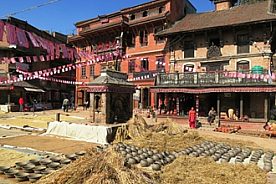
- Observe traditional crafts such as pottery, woodcarving and thangka painting
- Choose from a selection of full and half day guided tours
- Travel in a private car with a driver and an English-speaking guide
The Kathmandu Valley has a long and rich history and a vibrant culture and there is much that is worthwhile to see there - crowded bazaars, ancient temples, Buddhist stupas, crumbling shrines and picturesque palaces. The Malla kings who ruled in the valley created three major cities in the valley, Kathmandu, Bhaktapur and Patan and each of these cities has buildings that are showpieces for the art and architecture of local Newari craftsmen. We offer a selection of half day trips and full day trips to these sites the valley.

- Activities include; bird watching, elephant washing, canoe ride, elephant experience, landrover safari and jungle walks
- Choice of accommodation from budget to luxury
- Suitable to add to any holiday flying in/out of Kathmandu
Why not extend your adventure in Nepal by visiting Nepal’s jungle region for a complete contrast to the high mountains and the Kathmandu Valley. Chitwan is home to a rich and varied wildlife. Here are found wild elephant, rhinos, leopard, sambar, chital (spotted) deer, wild boar and arguably the most magnificent of cats, the Royal Bengal Tiger. You may even see sloth bear, gaur (wild cattle) and crocodiles. Chitwan is also wonderful for birdlife especially in the spring, when the jungle rings day and night to the calls of several kinds of Asian cuckoo.
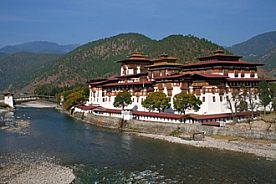
- 5-day cultural tour or 8-day gentle walking options available
- See the main sights in Paro, Thimphu and Punakha
- Bhutan is just a short flight from Kathmandu
Though only a short flight from Kathmandu, Bhutan offers a very different Himalayan experience to Nepal. Characterised by lush valleys, terraced hillsides and soaring peaks the landscape is endlessly picturesque, whilst the imposing dzongs (monastery/fortresses) and Swiss chalet style houses give each town or village a look that is distinctly Bhutanese. Here are just two options – if you would prefer something different please discuss with this office.
A taste of Bhutan - five-day cultural tour This five-day tour visits Bhutan’s key sights and cultural centres including magnificent Taksang Monastery (Tiger’s Nest), the beautiful riverside dzong at Punakha and the fascinating treasures housed in the National Museum at Paro. The tour will be led by a knowledgeable Bhutanese guide and accommodation is in comfortable hotels with all meals included.
A short walk in Bhutan - eight-day gentle walking and cultural tour This eight-day gentle walking trip offers the perfect introduction to some of the cultural highlights and scenic delights of Bhutan. You begin with sightseeing om Thimphu and a walk to Cheri Monastery, one of Bhutan’s most historic temples before travelling over the Dochu La Pass to Punakha, the former winter capital. In Punakha you take a lovely valley walk and visit the beautiful riverside dzong. Driving back to Paro you take a pretty walk from the Dochu La through beautiful forest. You then drive up to the Chele La Pass and take the lovely walk to Kila Nunnery, before ending your trip with the walk up to Tiger’s Nest Monastery, Bhutan’s greatest cultural treasure and a fitting conclusion to a superb extension. You will stay in good quality, comfortable hotels throughout and all meals are included.
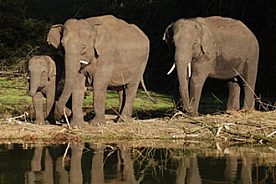
- Jungle activities including an elephant experience, bird watching, rafting and nature walks
- See wild elephant, rhinoceros, leopard, deer, wild boar and if you are lucky, the famous Royal Bengal Tiger
- Stay at the delightful Tiger Tops Karnali Lodge situated on the edge of the park
After your adventurous time in the Himalaya why not add a relaxing Jungle Safari to your trip? The Royal Bardia National Park is situated in the west of Nepal. We use Tiger Tops Karnali Lodge, which is acknowledged to be the best lodge in the area. Bardia’s remote geographic location and the fact that the lodge has only 12 rooms, lends a degree of exclusivity to the experience, in comparison to other more popular parks. From the lodge you will be able to participate in safaris and have the chance of seeing some of the country’s wonderful wildlife, for instance, wild elephant, rhinoceros, leopard, deer, wild boar and if you are lucky, the famous Royal Bengal Tiger. There is also the possibility of visiting the villages of the Tharu tribal people that surround the lodge. With its abundant wildlife, relaxing lodge and first class service, our Bardia extension is an experience you will savour!

- Escape the crowds and hustle and bustle of Kathmandu
- Walks available from the cottage - explore the nearby countryside
- Single and double rooms available, or exclusive hire of the entire cottage
- Breakfast and dinner included, plus unlimited tea and coffee
While in Kathmandu, why not experience an exclusive, private, home away from home? Shivapuri Heights Cottage is a “home-stay-style” property that offers a great escape from the hustle and bustle of the City. It is located in 2 acres of land at an altitude of 6,000ft /1,830m on the edge of the protected Shivapuri Reserve, with beautiful views looking down into the Kathmandu Valley.
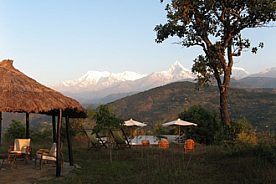
- Fly from Kathmandu to Pokhara in the Annapurna range of Nepal
- The lodge is an ideal base for you to relax in a rural mountain setting
- Beautiful outdoor swimming pool reflecting view of the Annapurna range
- Delicious Nepali dishes & continental specialities made from local fresh ingredients, home-grown herbs & garden salads
Why not extend your adventure in Nepal by visiting the beautiful Tiger Mountain Pokhara Lodge. Tiger Mountain Pokhara lodge is a lovely place, situated on a ridge half an hour outside Pokhara and enjoying the most stunning mountain views over the Annapurna range of mountains.
The lodge is an ideal base for you to relax in a rural mountain setting, away from the bustle of town. With a central lodge, bar and dining room, the comfortable rooms are arranged in clusters of cottages resembling a Nepali village. All have attached bathrooms, private verandas and Himalayan views. Daily menus feature a range of Nepali dishes as well as continental specialities made from local fresh ingredients and home-grown herbs and garden salads. You may enjoy lovely walks through the forests and villages of the lovely countryside surrounding the lodge, escorted by trained local guides. The beautiful swimming pool reflects the distant white peaks of the Annapurna range. The lodge also offers a range of Ayurvedic and shiatsu therapy and yoga and meditation sessions are also available (at additional cost). You may also venture further afield to visit Pokhara, Nepal’s second city located on a lovely lake and also enjoying spectacular views.
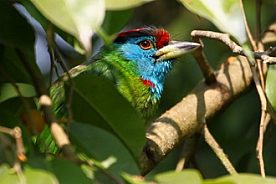
- Koshi Tappu is home to over 500 species of birds
- Look out for exciting wildlife like jungle cats, crocodiles and rare water buffalo
- Explore the park by foot, raft and jeep
- Stay in the pleasantly located Koshi Camp
Koshi Tappu Wildlife Reserve is one of the finest birdwatching and wildlife areas in all Asia. Located in south-east Nepal, the reserve covers 175 square kilometres with large expanses of open water created by the Koshi barrage, with marshes, lagoons, sandbanks and mudflats offering an outstanding wetland habitat. The reserve is home to over 500 species of birds, with the resident inhabitants being joined by large numbers of migratory species from Siberia and Tibet, which take up residence from November to February. The Koshi Tappu Wildlife Reserve provides one of the best places in Nepal to view migratory water fowl, waders and shore birds with many species seen here which are not recorded elsewhere in the region.
There is also much wildlife to be seen in Koshi Tappu including blue bull, golden jackal, Bengal fox, fishing cat, jungle cat, mongoose, civet cat, porcupine, Indian flying foxes and rare Gangetic dolphins as well as rare Marsh Mugger crocodiles. In addition, Koshi Tappu is the last habitat of the endangered Arna, a type of wild water buffalo.
During your visit you will explore the park with bird and animal spotting from a raft trip on the Koshi River, birdwatching walks, jungle walks and jeep trips. You will also have the opportunity to visit a family in one of the very interesting nearby local villages for a taste of rural Nepalese life. The Koshi Camp offers simple but comfortable accommodation and an expert staff of naturalists and birdwatchers to give you a comprehensive introduction to this wonderful area.

- Relax in luxuriously furnished accommodation with stunning Himalayan views
- Relax and rejuvenate in the top of the range spa
- Take a dip in the refreshing infinity pool
- Enjoy locally sourced organic food at the resort's restaurant
Dwarika’s Resort is a charming hotel located just an hour’s drive from Kathmandu city and set on a ridge above the town of Dhulikhel. At an altitude of 1,700m/5,600ft and enjoying panoramic views of the mountains, Dwarika’s Resort is the perfect way to relax and feel revitalised and rejuvenated. The resort promises ‘a Himalayan approach to well-being in rustic luxury.’
Built in Dwarika’s own inimitable style the resort offers a relaxing atmosphere of complete harmony in the tradition of ancient Buddhist and Hindu beliefs. The rooms are spacious and luxurious and are set in lovely gardens with inspiring mountain views. Facilities include an infinity pool overlooking beautiful countryside, top of the range spa facilities, a fitness centre, a Chakra sound therapy centre and a Himalayan salt room and meditation room all inspired by a blend of Vedic Philosophy and Buddhist Medicine.
The resort offers an impressive range of ayurvedic treatments as well as yoga and meditation and classes. Its wonderful restaurants offer delicious food, sourced locally and from Dwarika’s own organic farm, with delicious menus carefully created to complement Dwarika’s philosophy and treatments. Other activities include lovely walks to visit their farm or to explore the surrounding area and visit traditional villages such as the legendary Namobuddha Monastery or the Newari village of Panauti, to experience the simple joys of Nepalese rural life.
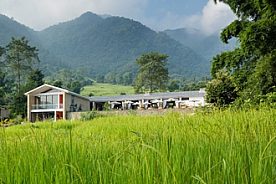
- Spend two or more tranquil nights in rural Pokhara
- Sample the organic and locally sourced Nepali cuisine
- Idyllic setting with mountain views
- The resorts offers a swimming pool, spa and gym
- Eco-friendly
We are delighted to offer this new luxury stay in a rural location just outside Pokhara. We are sure this is set to become a favourite with our clients.
The Pavilions Himalayas is a luxury resort set in beautiful farmland amid paddy fields in a tranquil rural location approximately 5km outside Pokhara. There are dramatic mountain views from the resort as well as Pokhara’s famous Peace Pagoda seen on top of a nearby ridge.
The beautiful rooms are set in individual villas and are large and comfortable, all having whirlpool baths, separate rain shower cubicles, enormous beds and offering wonderful hand made soaps and shampoos made with herbs from their garden.
All facilities at the resort are top of the range and include a lovely swimming pool and spa. From the resort it is just a short drive to explore Pokhara or there are pleasant walks from the hotel or you can just chill at the resort, have a massage and enjoy the facilities.
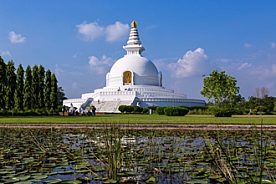
- Visit one of Nepal's most sacred Buddhist pilgrimage sites
- Stay in a comfortable hotel next to Lumbini
- Spend a full day touring the site with an expert local guide
- Flights and transfers to/from Kathmandu included
Enjoy a three day extension to the birthplace of Buddha, one of the most important Buddhist pilgrimage sites in the world. Take the short flight from Kathmandu, and spend two nights in a comfortable 3* hotel, just steps from the Lumbini temple complex, with a full day to explore the fascinating UNESCO World Heritage Site in the company of an expert local guide.

















